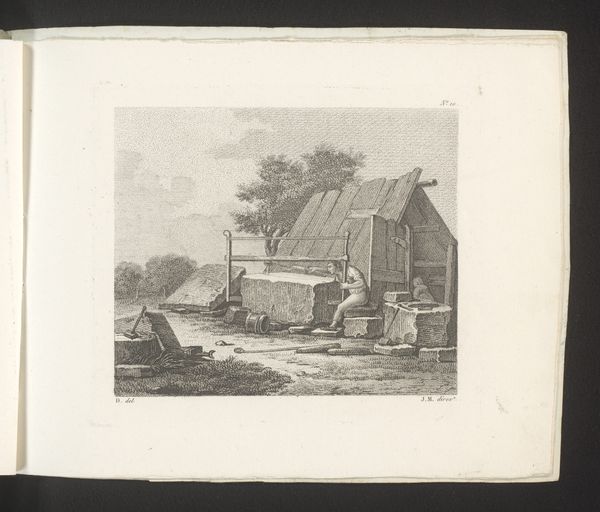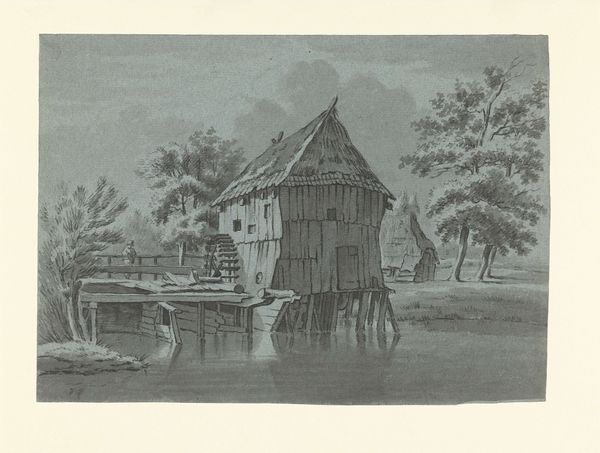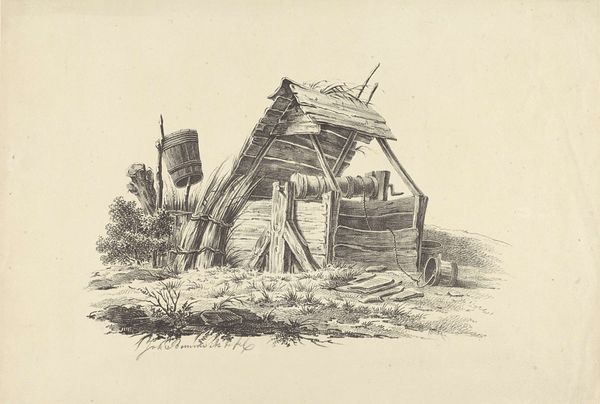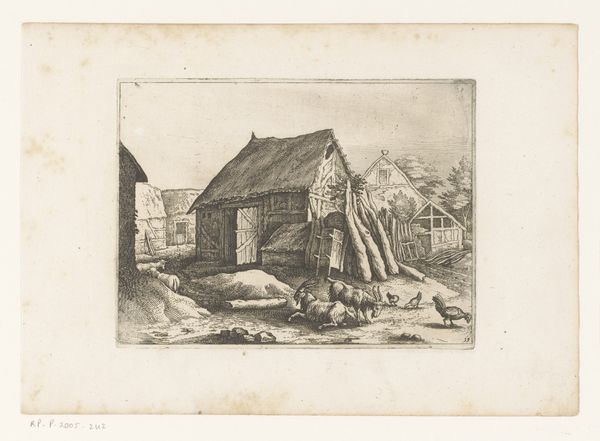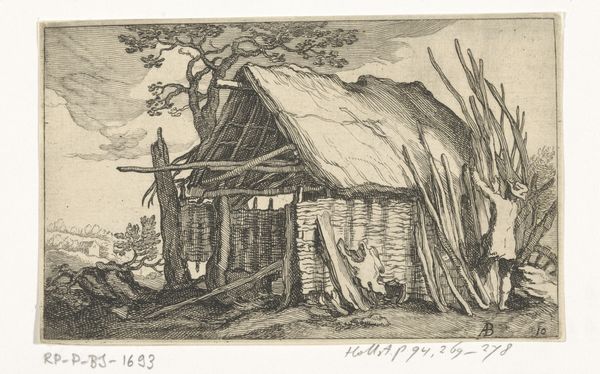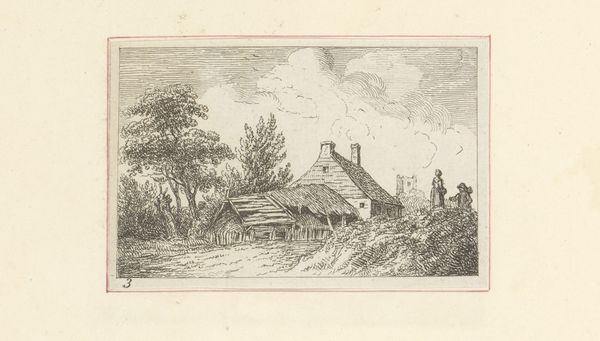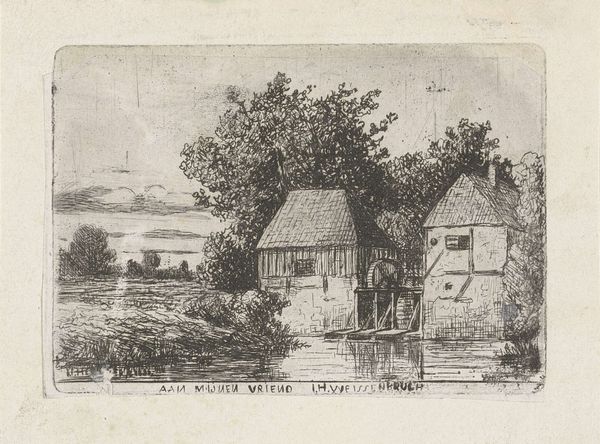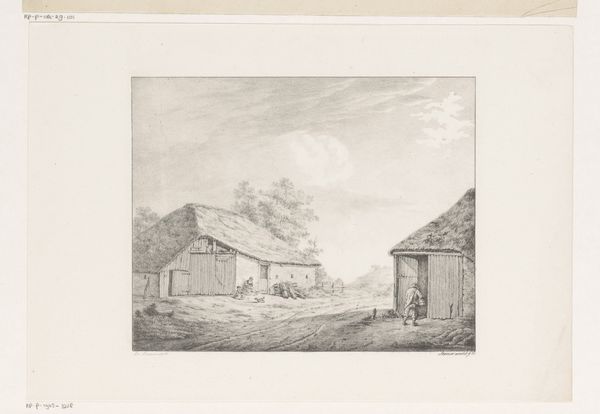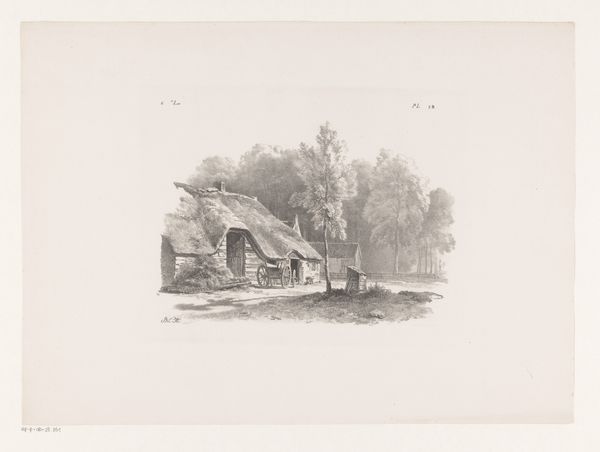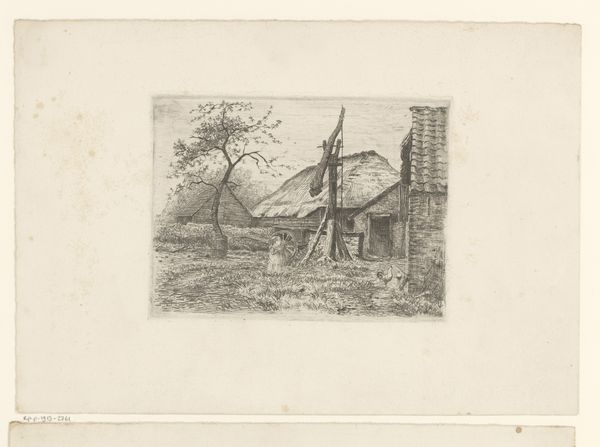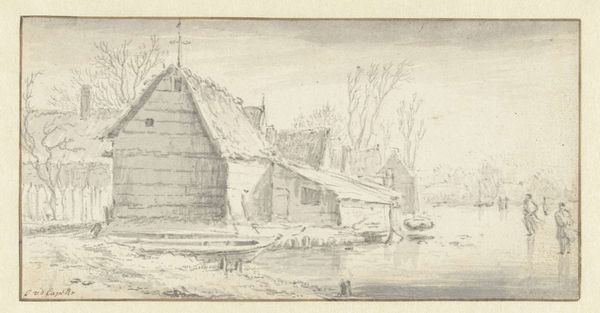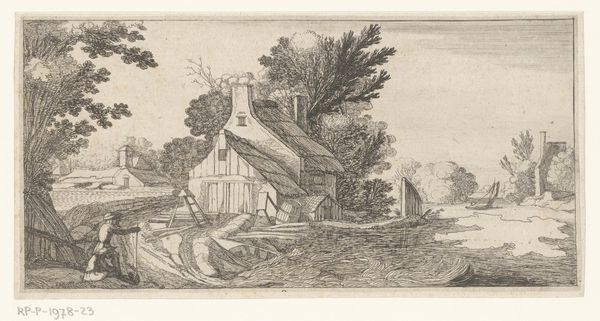
drawing, pencil
#
drawing
#
dutch-golden-age
#
landscape
#
pencil
#
realism
Dimensions: height 183 mm, width 218 mm
Copyright: Rijks Museum: Open Domain
Editor: Here we have Gerrit Hulseboom's "Watermolen Den Haller te Diepenheim," made sometime between 1794 and 1863 using pencil on paper. It's a detailed, almost photographic representation of a watermill, but also…quiet, you know? What do you see in this piece? Curator: That quietness is exactly what grabbed me too, the stillness practically hums! To me, it's like a little window into a specific moment, not just any watermill, but *this* one. The detail suggests someone standing there, feeling the damp air, listening to the creak of the wheel. The Dutch Golden Age landscape style always evokes that sense of being in nature, don't you think? Editor: It does, but I'm surprised you call it "Golden Age." I thought that period was mostly known for grand portraits and genre scenes. This feels much more...ordinary? Curator: Ah, but even in the ordinary, there's a kind of glory. The realism emphasizes the truth of daily life; it almost whispers something about history. Plus, consider the humble materials. Pencil. Paper. Accessible, reflecting a democratic spirit in capturing beauty around you, isn't it? What sort of story do you imagine the drawing tells? Editor: I guess I never really thought about the artist making a statement just by choosing to depict something like this so meticulously. Maybe it’s a testament to a changing world and simpler times…something that evokes peace? Curator: Precisely! Art becomes a vessel that reminds us of the simplicity. Editor: Thanks, I hadn’t really thought of art doing all that before! Curator: My pleasure! Every glance offers an epiphany.
Comments
No comments
Be the first to comment and join the conversation on the ultimate creative platform.
